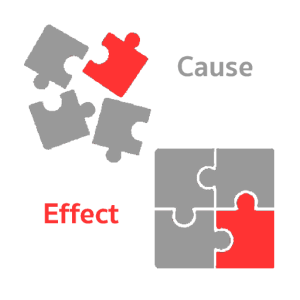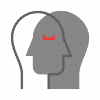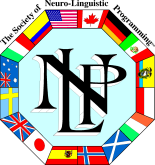
In this part of the Meta Model we will tell you all about Cause and Effect. You will find some examples and how to recognize this pattern. Also we will give you some exercise with NLP Cause and Effect. Have fun reading! Happy Days!
What is NLP Cause and Effect?
In NLP Cause and Effect is simple to explain. This language pattern indicates a causal relationship between one element or phrase and another. Because something causes or leads to something else, or makes something else occur. Cause and Effect statements are often heavily associated with beliefs and rules. Some keywords to listen for: “IF … THEN …” (even if the “THEN” part is implied), or, “WHEN … I/THEY/IT …”
An Example of Cause and Effect
Now going the way, you already have learnt to challenge to gather more information. The Cause and Effect-pattern is a bit more complicated since you have to decide what you are going to investigate next. Because you can ask about the source of the pattern, you can ask for counter examples and you can decide to ask about the logical subsequent implications. Let’s write out an example: “If I give you an example here, it might cause you to think of others.” First, to ask about the source of the pattern, you can ask: “How do you know, specifically”. Next, to ask if there are any counter examples, you go “Are there? Or could there be any exceptions to this rule?”. And maybe you decide to ask about the logical subsequent implications of this pattern, what happens next, you go: “If that happened, then what would that lead to?”
The flavors of NLP Cause and Effect
The example given is only the example of “IF [A] THEN [B]”. Cause and Effect statements come in a wild variety, “WHEN [A], THEN [B]”, “[A] MAKES [B] HAPPEN”, “[A] LEAD TO [B]”, “EVERY TIME [A], [B] HAPPENS”, “[A] CAUSES [B]”. Today I challenge you to start to recognise all of the Cause and Effect patterns in your conversations and to see how people react.
Let's do some exercise with NLP Cause and Effect
As an exercise today, write 30 patterns of Cause and Effect, using the forms of “IF [A] THEN [B]”, “WHEN [A], THEN [B]”, “[A] MAKES [B] HAPPEN”, “[A] LEAD TO [B]”, “EVERY TIME [A], [B] HAPPENS” and “[A] CAUSES [B]”.
In NLP Cause and Effect is part of the higher chunk called Distortion which is part of the Meta Model.
Last but not Least
Remember, to increase your efficiency as a NLP Practitioner, know your positive intention for the message you want to convey, build rapport and pay attention on what and how you use language. Leave people and business in a better place that where you found them, every day! Now you have learned about NLP Cause and Effect, you will see that the Cause is simple and the Effect is Great, isn’t it?
Mind Tools provides NLP Practitioner and NLP Master Practitioner Trainings and Certifications. We educate you according to the renowned, latest and highest standards set by the Society of NLP. We will train you thoroughly in all the corners of Neuro-Linguistic Programming and some extras we learned from Dr. Richard Bandler directly.
- Mind Tools Co., Ltd.
- NLP Cause and Effect







